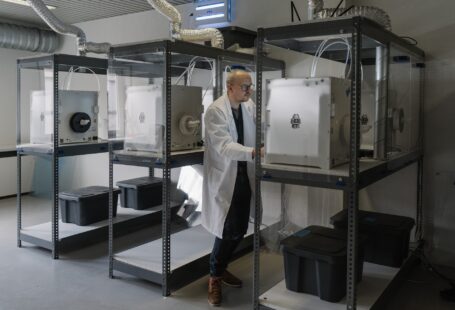The world is increasingly becoming aware of the need to adopt sustainable practices and reduce waste. This has led to an increased interest in recycled materials and their use in a variety of industries, including 3D printing. 3D printing is a relatively new technology, but it has already made a tremendous impact on the manufacturing industry. By leveraging the power of recycled materials, 3D printing can help create a more sustainable and eco-friendly future.
What is 3D Printing?
3D printing is a process of creating physical objects from digital models. This process involves the use of 3D printers, which use a special type of filament, such as plastic, metal, or other materials, to create the desired objects. The materials used in 3D printing can range from traditional materials such as plastic and metal, to more unconventional materials such as food, wood, and ceramic.
Benefits of Recycled Materials in 3D Printing
Using recycled materials in 3D printing has numerous benefits. Firstly, it reduces the need for the production of new, virgin materials, which in turn reduces the burden on the environment. This is because the production of new materials often requires significant amounts of energy, water, and other resources.
Recycled materials also offer cost savings. Because the cost of producing new materials is often high, using recycled materials can help reduce the overall cost of production. Furthermore, the use of recycled materials is also more sustainable, as it helps reduce the amount of waste that ends up in landfills.
Types of Recycled Materials Used in 3D Printing
The types of recycled materials used in 3D printing vary depending on the application. For instance, recycled plastics, such as ABS and PLA, are commonly used in the production of 3D-printed objects. Other materials, such as nylon, are also used for more specialized applications.
In addition to plastic, metal can also be recycled and used in 3D printing. Metal filaments, such as aluminum and stainless steel, are often used for 3D-printed objects that require a high level of durability and strength.
Limitations of Recycled Materials in 3D Printing
Although the use of recycled materials in 3D printing can offer numerous benefits, there are also some drawbacks. For example, recycled materials may not have the same strength and durability as virgin materials. In addition, the use of recycled materials may also lead to a reduced quality of the finished product.
Conclusion
The use of recycled materials in 3D printing has the potential to create a more sustainable future. By leveraging the power of recycled materials, 3D printing can help reduce the burden on the environment, while also offering cost savings. Furthermore, the use of recycled materials in 3D printing can also help to reduce the amount of waste that ends up in landfills. While there are some drawbacks to using recycled materials, the benefits far outweigh the drawbacks, making the use of recycled materials in 3D printing an attractive option for those looking to create a more sustainable future.





